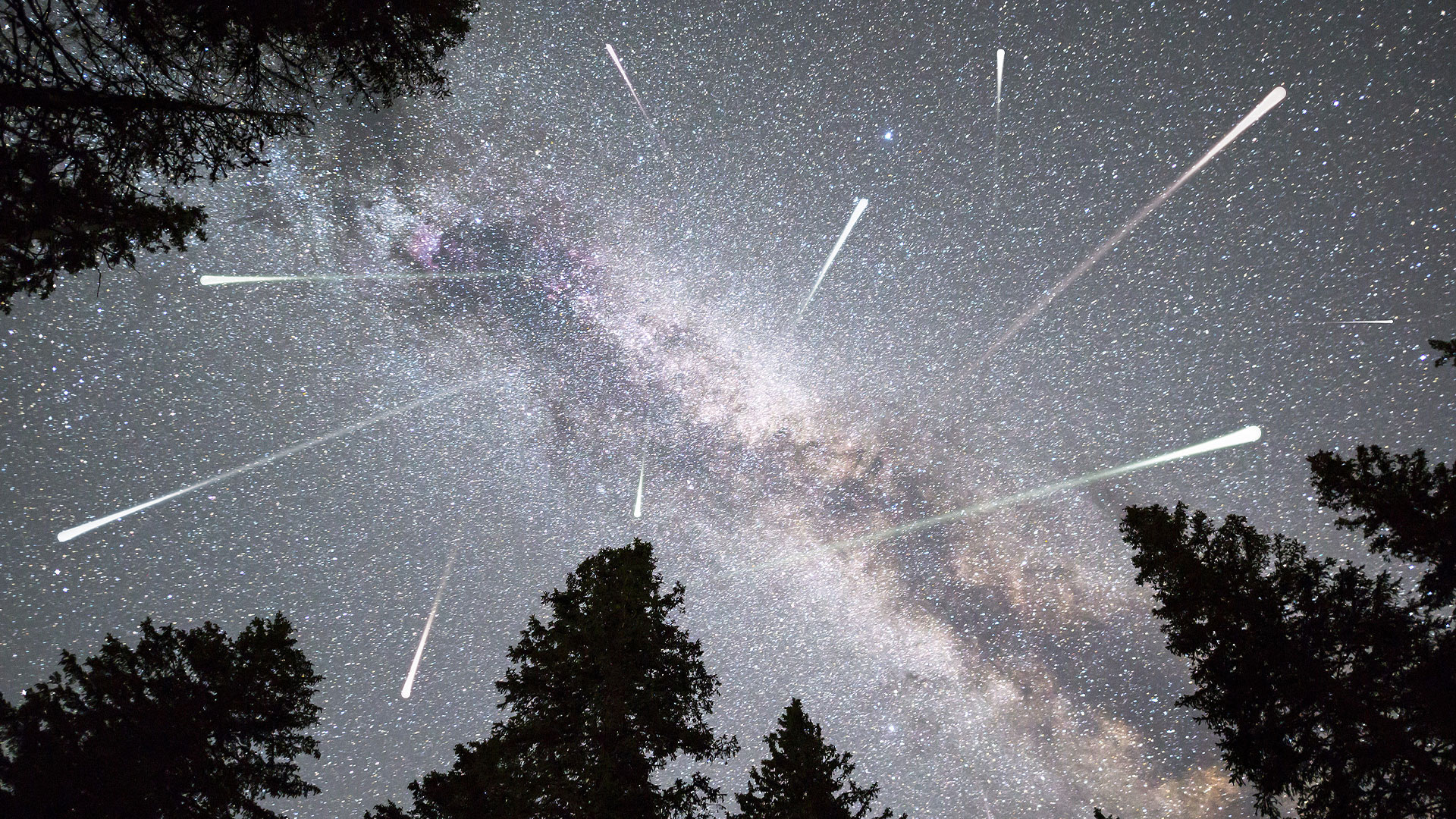
- This event has passed.
Perseids Meteor Shower Peak

Perseids peak mornings August 11-13, 2025
Predicted peak: We recommend watching for Perseid meteors on the mornings of August 11, 12 and 13. The moon will interfere; it’ll be big and bright, in its waning gibbous phase, on these mornings. But you’re stuck with the moon, which will be up from late night until dawn. Perseid meteors tend to strengthen in number as late night deepens into the wee hours before dawn. The shower is often best just before dawn. Here are some tips for watching meteors in moonlight. And if you are watching for meteors before dawn, be sure to look east for the dazzling conjunction of Venus and Jupiter. They’ll be closest August 12. See the chart below.
Radiant: The Perseid radiant rises in the middle of the night and is highest at dawn. See chart below.
Nearest moon phase: The full moon fell at 7:55 UTC on August 9.
Duration of shower: July 14 to September 1. This time period is when we’re passing through the meteor stream in space!
Expected meteors at peak, under ideal conditions: Under a dark sky with no moon, skywatchers frequently report 60 to 90 meteors per hour, or more. In 2025, due to moonlight, the American Meteor Society suggests you might see about only 25% of the expected peak rate, or perhaps 10 to 20 meteors per hour. The August Perseid meteor shower is rich and steady, from early August through the peak. The meteors are colorful. And they frequently leave persistent trains. All of these factors make the Perseid shower perhaps the most beloved meteor shower for the Northern Hemisphere.
The peak of the Perseid meteor shower will fall on the mornings of August 11, 12 and 13. But a bright moon will be in the sky during the prime meteor-watching hours, from midnight to dawn. Is it possible to watch the Perseids in moonlight? Yes. Get some tips from 2 expert night sky-watchers, EarthSky’s Deborah Byrd and Bob King, aka AstroBob. The moon is bright! But we’ve got you covered.
Thanks to EarthSky.org for keeping an eye on our skies and explaining it so well.
